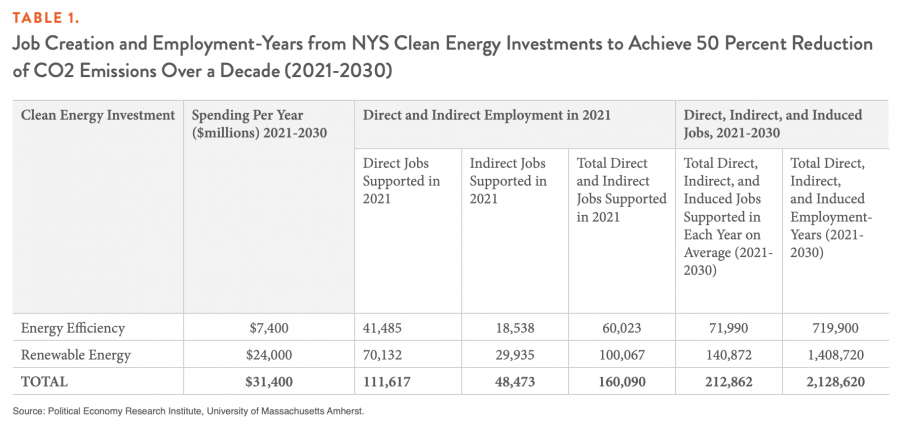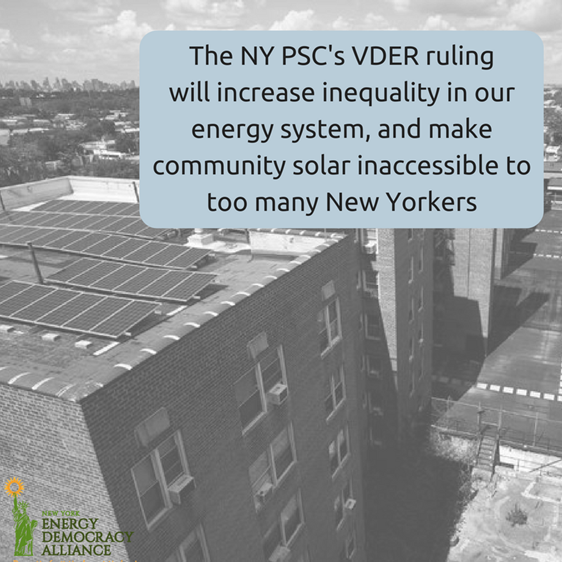Energy Democracy Advocacy Day
![[ New York Energy Democracy Alliance ]](https://gallery.mailchimp.com/f07cc4b25c2c5d8d149d4c6e6/images/3d1be92e-e6f8-446d-a9b0-48b452f1a7f5.png) On Wednesday, May 29th, NYSBC and other members of the Energy Democracy Alliance (EDA) will be hosting a gathering in Albany, NY to advocate for a resilient, localized, and democratically controlled clean energy economy in New York State—the unifying purpose of the 25 member organizations of the EDA. We see tremendous potential this year, so we are pooling our efforts around this one powerful day in Albany. We hope you can join us!
On Wednesday, May 29th, NYSBC and other members of the Energy Democracy Alliance (EDA) will be hosting a gathering in Albany, NY to advocate for a resilient, localized, and democratically controlled clean energy economy in New York State—the unifying purpose of the 25 member organizations of the EDA. We see tremendous potential this year, so we are pooling our efforts around this one powerful day in Albany. We hope you can join us!- 10am — Orientation
- Energy Efficiency policy overview
- Renewable Energy policy overview
- How to advocate
- Developing your personal story for Energy Democracy
- 12pm — Lunch Break
- Healthy food provided by the EDA
- Small group discussions
- 1pm — Legislative Meetings
- Facilitated meetings with legislative offices
- 3pm — Report Backs & Debrief
We are finalizing a shortlist of bills that have the best chance to further our goals for energy democracy. In the energy efficiency arena, we are working on a bill that would codify the state’s energy efficiency standard with a focus on environmental health and would mandate equitable building energy efficiency work and jobs training. On the renewable energy front, we are evaluating several bills that aim to increase solar energy and make solar energy more equitable. To address the broader and more long term impacts, we will be advocating for the Climate & Community Protection Act (CCPA), which would rapidly transition the state’s economy off of fossil fuels, invest 40% of the state’s climate fund into low-income communities and communities of color, and set high wage standards to make green jobs good jobs.
Do these issues resonate with you? If so, we hope you can join us in this important fight. Please RSVP and we will hold a seat at the table for you.

As many of you know from our previous email, we will be in Albany Tuesday through Thursday of next week. If you wish to lend your support on any or all of those days, please follow the links below for details, RSVP, and share with others.
- Tuesday 5/28: Joint Senate-Assembly hearing on the NY Health Act
- Wednesday 5/29: Energy Democracy Advocacy Day
- Thursday 5/30: Environmental Health & Justice Advocacy Day


 New York’s Public Service Commission (PSC) regulates the value of distributed energy resources (VDER) such as community solar. The PSC — which has 3 people plus 2 empty seats — voted today to approve the regressive VDER regulations, which they claim achieve “a major milestone in the Reforming the Energy Vision (REV) initiative by beginning the actual transition to a distributed, transactive, and integrated electric system.”
New York’s Public Service Commission (PSC) regulates the value of distributed energy resources (VDER) such as community solar. The PSC — which has 3 people plus 2 empty seats — voted today to approve the regressive VDER regulations, which they claim achieve “a major milestone in the Reforming the Energy Vision (REV) initiative by beginning the actual transition to a distributed, transactive, and integrated electric system.”